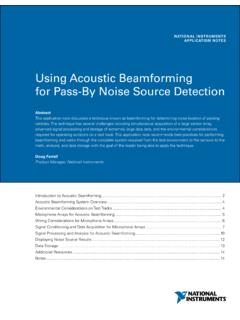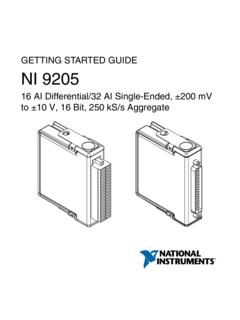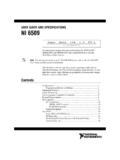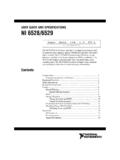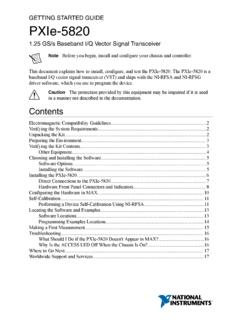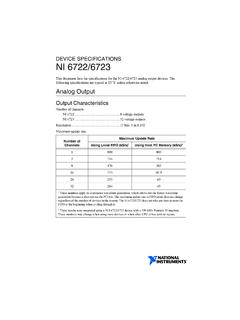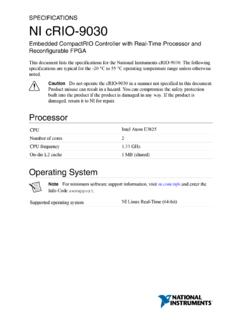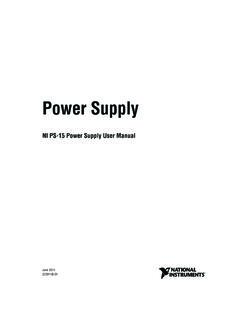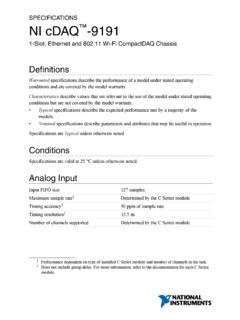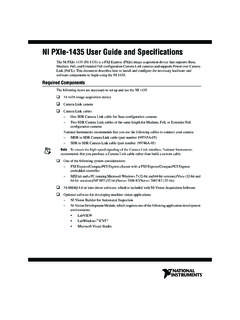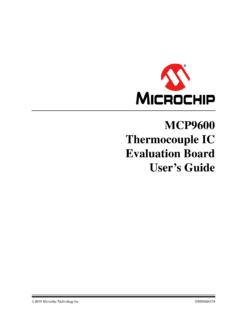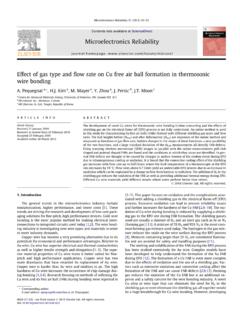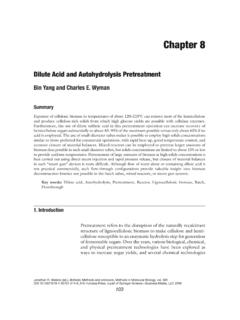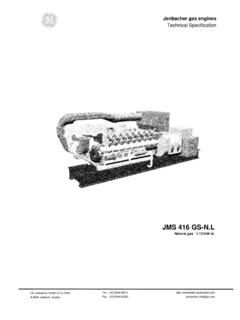Transcription of NI 9211 Datasheet
1 DATASHEETNI 9211 Datasheet4 TC, 80 mV, 24 Bit, 14 S/s Aggregate Screw-terminal connectivity 50 Hz/60 Hz noise rejection 250 Vrms, CAT II, channel-to-earth isolationThe NI 9211 thermocouple input module for use with CompactDAQ and NI CompactRIOchassis includes a 24-bit delta-sigma analog-to-digital converter, anti-aliasing filters, open- thermocouple detection, and cold-junction compensation for high-accuracy thermocouplemeasurements. The NI 9211 features NIST-traceable calibration and a channel-to-earth grounddouble isolation barrier for safety, noise immunity, and high common-mode voltage ContentsAccessories NI 9211 NI 9211 Getting Started Guide NI 9932 Backshell Connector KitNI 9213NI 9214* For a J type thermocouple at 100 C using high-resolution mode when S/s/chScrew TerminalSpring TerminalIsothermalTerminal BlockIsothermalTerminal Block250 VrmsCh-Earth250 VrmsCh-Ch250 VrmsCh-Earth250 VrmsCh-Earth14 S/s68 S/sIsolationContinuousConnectivitySample RateSoftwareSelectableOTD Autozero ProductNameNI 9211NI 9212 ChannelsMaximumAccuracy*( C)
2 C SERIES thermocouple MODULE COMPARISONNI C Series OverviewNI provides more than 100 C Series modules for measurement, control, and communicationapplications. C Series modules can connect to any sensor or bus and allow for high-accuracymeasurements that meet the demands of advanced data acquisition and control applications. Measurement-specific signal conditioning that connects to an array of sensors and signals Isolation options such as bank-to-bank, channel-to-channel, and channel-to-earth ground -40 C to 70 C temperature range to meet a variety of application and environmentalneeds Hot-swappableThe majority of C Series modules are supported in both CompactRIO and CompactDAQplatforms and you can move modules from one platform to the other with no | | NI 9211 DatasheetCompactRIOC ompactRIO combines an open-embedded architecturewith small size, extreme ruggedness, and C Seriesmodules in a platform powered by the NI LabVIEW reconfigurable I/O (RIO) architecture.
3 Each systemcontains an FPGA for custom timing, triggering, andprocessing with a wide array of available modular I/O tomeet any embedded application is a portable, rugged data acquisition platformthat integrates connectivity, data acquisition, and signalconditioning into modular I/O for directly interfacing to anysensor or signal. Using CompactDAQ with LabVIEW, youcan easily customize how you acquire, analyze, visualize,and manage your measurement Professional Development System for Windows Use advanced software tools for large project development Generate code automatically using DAQ Assistant and InstrumentI/O Assistant Use advanced measurement analysis and digital signal processing Take advantage of open connectivity with DLLs, ActiveX,and .NET objects Build DLLs, executables, and MSI installersNI LabVIEW FPGA Module Design FPGA applications for NI RIO hardware Program with the same graphical environment used for desktop andreal-time applications Execute control algorithms with loop rates up to 300 MHz Implement custom timing and triggering logic, digital protocols.
4 AndDSP algorithms Incorporate existing HDL code and third-party IP including Xilinx IPgenerator functions Purchase as part of the LabVIEW Embedded Control and MonitoringSuiteNI 9211 Datasheet | National Instruments | 3NI LabVIEW Real-Time Module Design deterministic real-time applications with LabVIEW graphical programming Download to dedicated NI or third-party hardware for reliableexecution and a wide selection of I/O Take advantage of built-in PID control, signal processing, andanalysis functions Automatically take advantage of multicore CPUs or setprocessor affinity manually Take advantage of real-time OS, development and debuggingsupport, and board support Purchase individually or as part of a LabVIEW suiteInput CircuitryThe NI 9211 channels share a common ground isolated from other modules in the channel passes through a filter and then a 24-bit analog-to-digital converter (ADC)samples the 1.
5 Input Circuitry for One Channel of the NI 9211TC+TC COMNI 9211 InputImpedanceOpenThermocoupleDetectionC urrent FilteredDifferentialAmplifierIsolatedADC 10 M 10 M Open thermocouple DetectionEach channel has an open thermocouple detection (OTD) circuit, which consists of a currentsource between the TC+ and TC- terminals. If an open thermocouple is connected to thechannel, the current source forces a full-scale voltage across the ImpedanceEach channel has a resistor that produces an input impedance between the TC and COMterminals. The gain and offset errors resulting from the source impedance of connectedthermocouples are negligible for most applications. Thermocouples with a higher leadresistance can introduce more significant | | NI 9211 DatasheetThermocouple Measurement AccuracyThermocouple measurement errors depend partly on the following factors: the type of thermocouple the accuracy of the thermocouple the temperature that you are measuring the resistance of the thermocouple wires the cold-junction temperatureFor the best accuracy performance, set up the NI 9211 according to the getting started guide on to minimize thermal gradients across the NI 9211 AccuracyHeat dissipated by adjacent C Series modules or nearby heat sources can cause errors inthermocouple measurements by heating the NI 9211 terminals to a different temperature thanthe cold-junction compensation sensor.
6 Thermal gradient across the terminals can cause theterminals of different NI 9211 channels to be at different temperatures, which creates accuracyerrors and affects the relative accuracy between temperature measurement accuracy specifications include errors caused by the thermalgradient across the NI 9211 terminals for configurations with the NI 9211 terminals facingforward or ChannelThe NI 9211 has an internal autozero channel, which can be subtracted from eachthermocouple reading to compensate for offset errors. Use the autozero channel if the ambienttemperature is less than 15 C or more than 35 C. Refer to the documentation for the softwarethat you are using for information about using the NI 9211 autozero 9211 SpecificationsThe following specifications are typical for the range -40 C to 70 C unless otherwise within typical use can vary based on chassis, mounting parameters, other modulespresent in the system, and installed The input terminals of this device are not protected for electromagneticinterference.
7 As a result, this device may experience reduced measurement accuracyor other temporary performance degradation when connected cables are routed in anenvironment with radiated or conducted radio frequency electromagneticinterference. To limit radiated emissions and to ensure that this device functionswithin specifications in its operational electromagnetic environment, takeprecautions when designing, selecting, and installing measurement probes 9211 Datasheet | National Instruments | 5 Input CharacteristicsNumber of channels4 thermocouple channels, 1 internal autozerochannel, 1 internal cold-junction compensationchannelADC resolution24 bitsType of ADCD elta-SigmaSampling modeScannedVoltage measurement range 80 mVTemperature measurement rangesWorks over temperature ranges defined byNIST (J, K, T, E, N, B, R, S thermocoupletypes)Conversion time70 ms per channel.
8 420 ms total for allchannels including the autozero and cold-junction channelsCommon-mode voltage rangeChannel-to-COM VCOM-to-earth ground 250 VCommon-mode rejection ratio (0 Hz to 60 Hz)Channel-to-COM95 dBCOM-to-earth ground>170 dBInput bandwidth (-3 dB)15 HzNoise rejection (at 50 Hz and 60 Hz)85 dB minimumOvervoltage protection 30 V between any input and COMD ifferential input impedance20 M Input current50 nAInput noise1 VrmsGain error (at -40 C to 70 C) typical, maximumOffset error (with autozero channel on) 15 V typical, 20 V maximumGain error from source impedanceAdd ppm per when source impedance>50 Offset error from source impedanceAdd V typical, V maximumper when source impedance >50 6 | | NI 9211 DatasheetCold-junction compensation sensor accuracy0 C to 70 C C typical, C maximum-40 C to 70 C C maximumMTBF633,012 hours at 25 C.
9 Bellcore Issue 2,Method 1, Case 3, Limited Part Stress MethodTemperature Measurement AccuracyMeasurement sensitivity1 With autozero channel onTypes J, K, T, E, N< CType B< CTypes R, S< CWith autozero channel offTypes J, K, T, E, N< CType B< CTypes R, S< CThe following figures show the typical and maximum errors for each thermocouple type whenused with the NI 9211 over the full temperature range and autozero on. The figures account forgain errors, offset errors, differential and integral nonlinearity, quantization errors, noise errors,and isothermal errors. The figures do not account for the accuracy of the thermocouple 2. thermocouple Type J and N Errors 20002004006008001000120001234 Measurement Error ( C)Measured Temperature ( C) Max 40 to 70 C Typ 40 to 70 C 1 Measurement sensitivity represents the smallest change in temperature that a sensor can detect.
10 It isa function of noise. The values assume the full measurement range of the standard thermocouplesensor according to ASTM 9211 Datasheet | National Instruments | 7 Figure 3. thermocouple Type K Errors 20002004006008001000120001234 Measurement Error ( C)Measured Temperature ( C) Max 40 to 70 C Typ 40 to 70 C Figure 4. thermocouple Type T and E Errors 200020040060080010000234 Measured Temperature ( C) 1 Measurement Error ( C)Max 40 to 70 C Typ 40 to 70 C Figure 5. thermocouple Type B Errors2004006008001200160018000246100014 00 Measurement Error ( C)Measured Temperature ( C) Max 40 to 70 C Typ 40 to 70 C 8 | | NI 9211 DatasheetFigure 6. thermocouple Type R and S Errors 200020040060080010001200024614001600 Measurement Error ( C)Measured Temperature ( C) Max 40 to 70 C Typ 40 to 70 C Power RequirementsPower consumption from chassisActive mode170 mW maximumSleep mode4 mW maximumThermal dissipation (at 70 C)Active mode170 mW maximumSleep mode4 mW maximumPhysical CharacteristicsIf you need to clean the module, wipe it with a dry For two-dimensional drawings and three-dimensional models of the C Seriesmodule and connectors, visit and search by module mm2 to mm2 (24 AWG to 12 AWG)copper conductor wireWire strip length7 mm ( in.)
